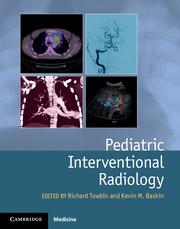2 - Central venous access
Published online by Cambridge University Press: 05 June 2015
Summary
History
The history of venous cannulation extends over 250 years. Intravenous therapy was first performed in children in the 1940s. In 1973, Broviac and associates introduced the tunneled silicone central venous catheter (CVC) for prolonged hyper-alimentation. Six years later, Hickman and colleagues presented an alternative to the Broviac right atrial catheter with a larger lumen. The Hickman catheter has subsequently gained popularity for a broader range of indications. Initially, tunneled right atrial catheters were inserted by surgical cut-down of the proximal cephalic vein and subcutaneous tunneling to the anterior chest wall. However, this approach was not always successful because of the small caliber of the cephalic vein. Thus, cut-down of the larger and more central internal or external jugular veins was introduced in the early 1980s, and soon after methods were described for percutaneous insertion of subclavian venous catheters. Over the years, surgical techniques have been adapted so that central lines could be inserted percutaneously without and with imaging guidance.
Interventional radiology and CVC insertion
In the past, interventionalists were primarily consulted to evaluate and treat catheter dysfunction or catheter-related complications, through diagnostic venography as well as image-guided redirection of malpositioned catheters and retrieval of intravascular catheter fragments. Advances in imaging, especially sonography, and in interventional techniques allowed interventionalists to gain venous access even in patients whose major venous pathways (jugular, subclavian, and femoral) had become occluded. In the late 1980s, surgical techniques for placement of central lines were adapted to allow for primary percutaneous insertion. Since that time, successful placement of CVCs in angiography suites has become the norm in virtually all facilities worldwide where interventional services are available. The percutaneous technique is equally adaptable for both children and adults. Over the last few years, referrals for insertion of CVCs have increased dramatically. In many large pediatric centers, pediatric interventionalists provide leadership of the multispecialty coalition responsible for the many diverse aspects of care of the complex population of patients who require central venous access. Image-guided percutaneous insertion of central and peripheral catheters for venous access is now the fastest growing segment of pediatric interventional practice.
- Type
- Chapter
- Information
- Pediatric Interventional Radiology , pp. 22 - 96Publisher: Cambridge University PressPrint publication year: 2015
- 1
- Cited by



